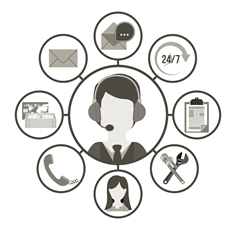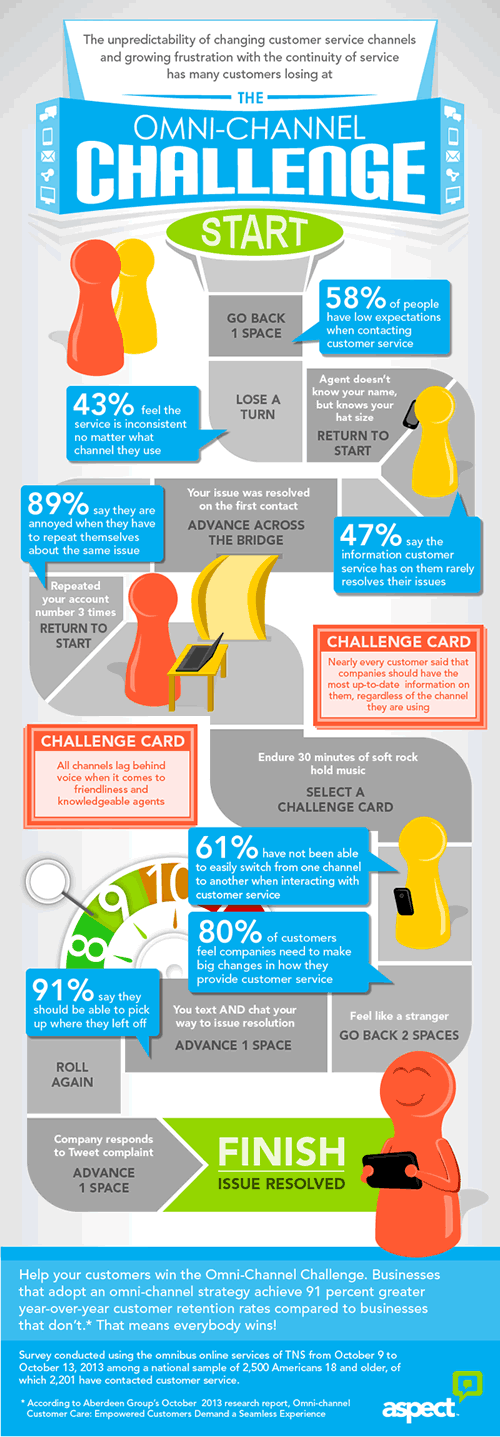
Interactive Intelligence Group, a global provider of contact center, unified communications and business process automation solutions, identified the most valued attributes for customer interaction in its Customer Experience Survey 2014, Wave 2.
Timely response ranked first before, in order of decreasing importance, knowledgeable agents, first call resolutions, professionalism, efficiency and effective follow-up.
The third most valued attribute for customer interaction is first call resolution (and we can expand that to first contact resolution in this omnichannel customer service and contact center era). The customer wants an issue resolved without having to go through a cascade of interactions. However, first call resolution is not so much a matter of quick response, it’s a matter of avoiding to have to spend time in the future – a guarantee and promise of frictionless business interactions. And it requires having a knowledgeable agent “on the other end”.
The difference between fast resolution and fast response
As said, timely response is clearly attribute number one. This simply means getting access to an agent fast, regardless of the actual resolution. We want our calls, emails and other interactions to be heard/seen fast and we want someone to reassure us by picking up the phone or sending an email back.
In that sense, a knowledgeable agent can also be an agent who picks up the phone, for instance, listens and right away can transfer to the right person, while assuring the customer that he/she won’t be sent to other agents that 1) turn out not to be the right ones and 2) have not been informed about the nature of the request as communicated to the first agent. All this of course doesn’t take into account automating filtering selection mechanisms when the customer dials in.
So, speed is essential and that’s what timely response is about: don’t let me wait and listen to that silly jingle. However, timely response shouldn’t be an excuse for poor quality. The least you expect when someone picks up the phone is that they listen well, regardless of peak times.
Balancing time, expectations, promises and costs
If we look at the main cause of frustration with customer service, according to the same report, 75% of respondents cite “cannot understand the agent on the phone”, following by a condescending or demeaning agent (also 75%), long initial wait times (64%) and lack of effort from the agent (64%).
If timely response means an agent quickly saying something and then putting you back on hold, you can imagine that’s double or triple frustration. If it is combined with long initial wait times and not having a knowledgeable agent once you get through, frustration even grows more.
Agreed, it isn’t simple. Without unified communications and integrated systems it’s even worse. And with agents that aren’t knowledgeable enough or simply are demeaning because they can’t handle the pressure the company keeps increasing, it can get totally out of hand.
Striking a balance between time (speed, timeliness, response,…), promise (“this is what you can expect and we guarantee it will be done”), and customer expectations (including quality and respect), is essential.
The human response
Of course, there is the eternal cost perspective that needs to be tackled as well, certainly when contact centers are still looked upon as cost centers than profit centers and when, even if they’ve turned into profit centers, the pressure on cost reduction and/or control is high.
And last but not least, there is the human element.
In a US survey by Five9 and Harris Interactive research I mentioned in an article on the customer experience and contact center challenge, 93% of consumers (beware of self-reporting) said “they would be more forgiving when a company couldn’t resolve their problem over the phone if the person they were speaking with, had at least one of the following attributes:
- Respectful (74%).
- Knowledgeable (69%).
- Friendly (57%).
- Patient (53%).
- Sympathetic (49%).
The omnichannel customer experience management
Part of the answer to solve the speed (and cost) challenges of an increasingly connected consumer is having an omnichannel customer experience management or omnichannel customer service program in place that works. It allows you to increase customer retention, revenue, etc., but it also enables you to increase first contact resolution rates while at the same time decreasing costs.
From a technology perspective, such an omnichannel approach is not just about integrating interaction channels and technologies with CRM and whatever other relevant back-office system. It’s also about getting information out of silos, intelligent information management and gradually about reducing manual processes, while adding artificial intelligence to processes that can be automated and staff can focus more on tasks that satisfy both them and their customers.
In its omnichannel customer care report, which we mentioned earlier here, Aberdeen Group found that the so called best-in-class or most mature companies having adopted an omnichannel customer care approach had:
- 8.5% average year-over-year (YOY) improvement percentages in first contact resolution rates (all others had an average increase of 1.6%).
- 7.5% average YOY improvment in the average cost per customer contact (the others 0.2%).
Finding that precious mix proves to be better for both the business and customer. And deep down we all know it. In the end it all boils down to what Aspect, another important player in the industry, mentions in the infographic below: help your customers with the omnichannel challenge.
Or better: remove your omnichannel hurdless to ensure frictionless and balanced service, avoiding the typical frustrations depicted in it.


